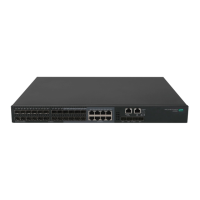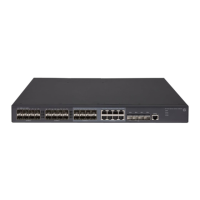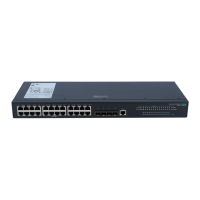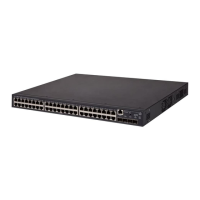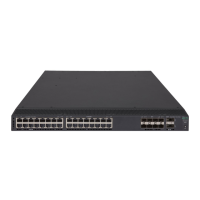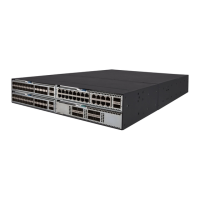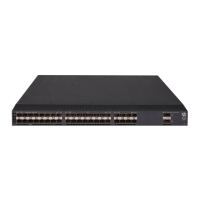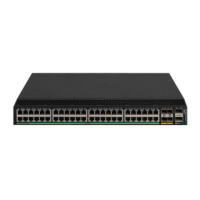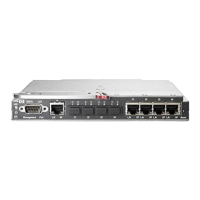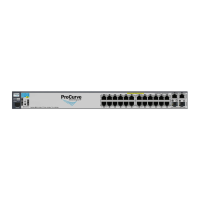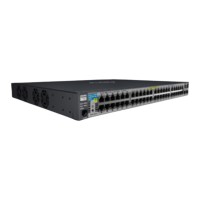33
<Sysname> system-view
[Sysname] interface gigabitethernet 1/0/1
[Sysname-GigabitEthernet1/0/1] port up-mode
storm-constrain
Use storm-constrain to enable broadcast, multicast, or unknown unicast storm control on an
Ethernet port.
Use undo storm-constrain to disable storm control.
Syntax
storm-constrain { broadcast | known-unicast | multicast | unicast } { pps | kbps | ratio }
upperlimit lowerlimit
undo storm-constrain { all | broadcast | known-unicast | multicast | unicast }
Default
Traffic storm control is disabled.
Views
Layer 2 Ethernet interface view
Predefined user roles
network-admin
Parameters
all: Disables storm control for all types of packets: broadcast, multicast, and unknown unicast.
broadcast: Enables or disables broadcast storm control.
known-unicast: Enables or disables unknown unicast storm control. This keyword is available in
Release 1121 and later.
multicast: Enables or disables multicast storm control.
unicast: Enables or disables unknown unicast storm control.
pps: Sets storm control thresholds in pps.
kbps: Sets storm control thresholds in kbps.
ratio: Sets storm control thresholds as a percentage of the transmission capacity of the interface.
upperlimit: Sets the upper threshold, in pps, kbps, or percentage.
lowerlimit: Sets the lower threshold, in pps, kbps, or percentage.
Usage guidelines
After you configure this command, the device collects the statistics of a particular type of traffic at the
specified interval, which can be configured by using the storm-constrain interval command. When
a particular type of traffic exceeds its upper threshold, the interface takes a certain action, which can
be configured by using the storm-constrain control command.
The storm-constrain, broadcast-suppression, multicast-suppression, and
unicast-suppression commands can suppress storm on a port.
• The storm-constrain command uses software to suppress traffic, and affects the device
performance to a certain extent.
• The broadcast-suppression, multicast-suppression, and unicast-suppression commands
use the chip to physically suppress traffic, and have less influence on the device performance
than the storm-constrain command.
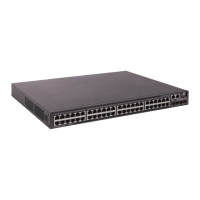
